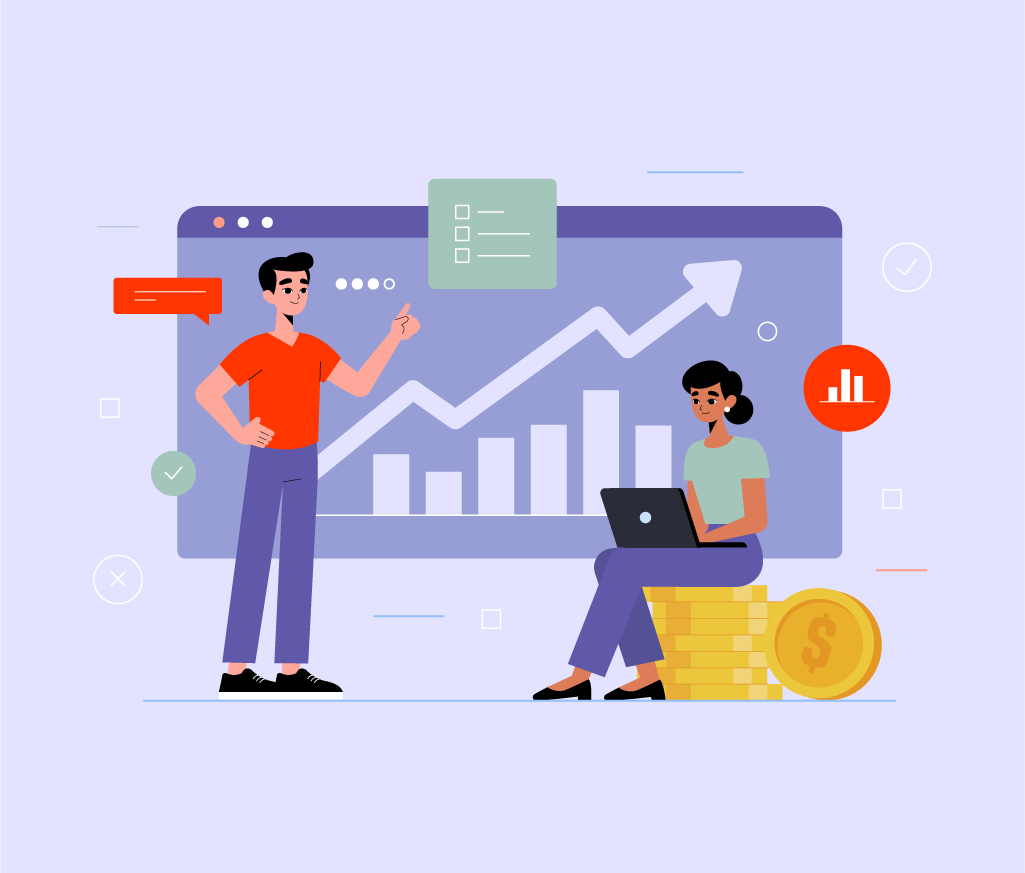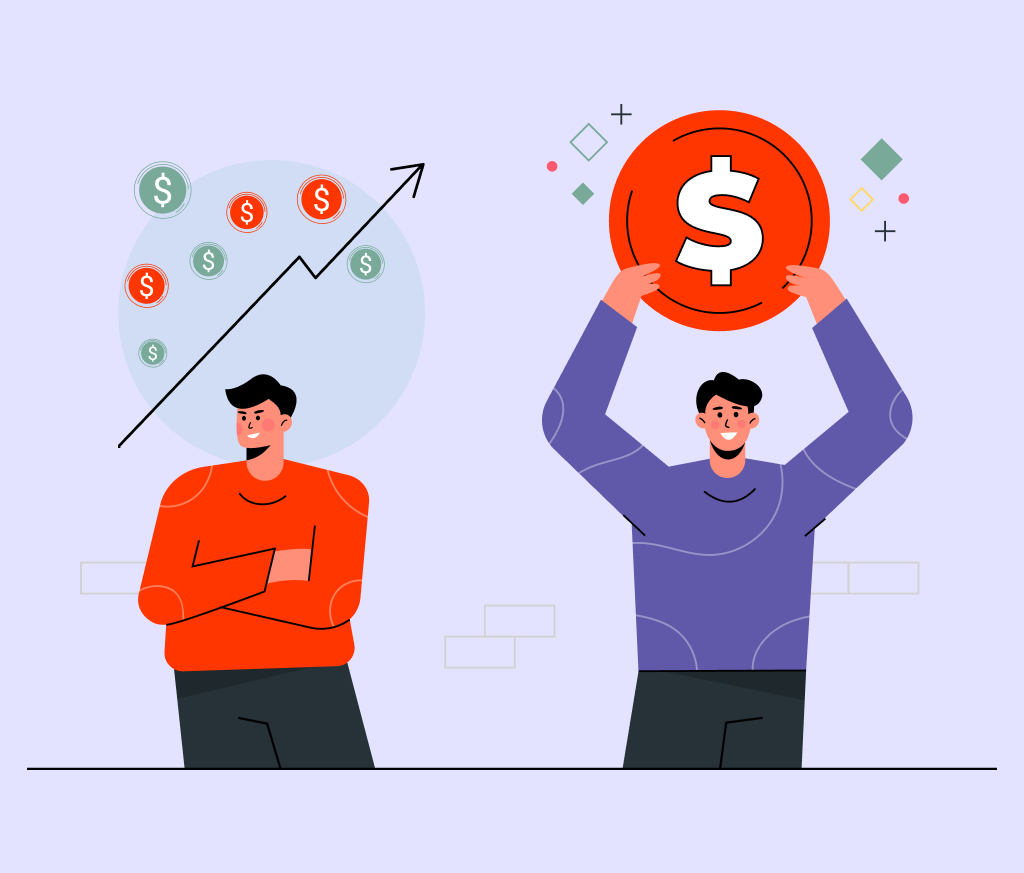What Are The Different Startup Funding Stages?
Irrespective of what stage you are in your entrepreneurial journey – whether you are starting a new business, you have an established
By teammarquee . December 15, 2021

Irrespective of what stage you are in your entrepreneurial journey – whether you are starting a new business, you have an established client base of 1000+ customers or have become a known brand in your industry, you will always need both financial and knowledge-based support to reach the next stage of your journey. The journey is called raising money for a startup.
An important part of going through that entrepreneurial journey lies in the understanding of the different startup funding stages. Only when you understand the different types of funding for startups, will you be able to choose the one that best aligns with your business needs.
Without further delay, let us dive into the different startup funding stages.
What are the different startup funding stages?

Pre-seed Funding
Also known as the bootstrapping stage, this is one of the most primary stages of startup funding. It comes even before the startup is brought into an operative existence. Here, you generally use your own resources to build your startup or take help from friends or family members.
Generally, at this stage, the entrepreneurs are employees somewhere and they are saving up to set their business off-ground. In the pre-seed level, the value of a startup can be anywhere between $10k to $100k.
The potential investors:
The common pre-seed investors are –
- Family or friends
- Startup owners
- Micro VCs
Seed Funding
9 out of 10 startups don’t reach the stage beyond bootstrapping. This is where seed funding for startups comes in. It is in many ways the first official stages of startup funding. The money that an entrepreneur raises at this stage is generally used for financing their first steps like market research, hiring a team of founding members, determining the end user, or simply running a hygiene check on the product.
While the list of investors is almost the same as the pre-seed round, there is one new class of investors that come in here – Angel investors. These investors with a focus on early stage funding startups tend to take greater risks compared to their other investors counterparts in return of an equity stake in the company. Valuation wise, the companies at this stage are usually valued anywhere between $3 to $6 million.
The potential investors:
The common seed investors are –
- Family and friends
- Angel investor funding
- Crowdfunding
- Micro VCs
Series A Funding
Once the business has built a track record, they can opt for Series A funding for startups to scale their user base or product. At this stage, a plan is created to build a business model that proves the long-term efficacy of the business.
Here, the entrepreneurs start learning how fundraising works by reading startup funding explained articles and start making connections with the VCs and angel investors. At the same time, they start strengthening their product in a way that they are seen as a profit-making model and not just as a “good business idea”. The startups at this stage are usually valued anywhere between $10 to $30 million.
The potential investors:
The common Series A investors are –
- Super angel investors
- Venture capitalists
- Accelerators
Series B Funding
This funding process for startups is about taking the business to the next level beyond the development stage.
Series B funding is used to take the effects of Series A to the next level. For example, if the result of Series A is a loyal user base, the Series B helps entrepreneurs grow to a stage where they are able to keep up with the demand. While in many ways, Series B is similar to Series A, the biggest difference comes from a new class of investors that specialize in backing well-established firms.
The potential investors:
The common Series B investors are –
- Late stage venture capital financing
- Venture capitals (VCs)
Series C Funding
Businesses that cross the Series B round are fairly successful in nature. These businesses are usually looking to build new products, expand in new markets, or acquire new brands through the startup funding process. While on one hand, businesses use the Series C funding for startups to scale the company, the investors enter the stage to get double of their invested amount back.
At this stage, new investors come into play to invest in a company as a stable revenue stream. The startups that arrive at this stage usually belong to the $100 to $120 million.
The potential investors:
The common Series C investors are –
- Private equity firms
- Hedge funds
- Late stage VCs
- Banks
Series D Funding
First things first. Very few startups reach this stage. Startups generally raise Series D funding when they want to enter the merger and acquisition phase.
The funding stage gives startups the most viable solution enabling them to negotiate better in the merger and acquisition stage. The startups at this stage are usually valued at $150 to $300 million.
The potential investors:
The common Series D investors are –
- Private equity firms
- Hedge funds
- Late stage VCs
- Banks
IPO – Initial Public Offering
IPO is the process of offering corporate shares to the public for the very first time. The IPO is generally raised by startups to generate funds, while the established firms use IPO to allow the startup owners to exit their ownership by selling their shares.
There are a number of benefits that come tagged with IPO like –
- The public organization is able to generate more funds via secondary offerings
- A number of public organizations pay their executives via stocks
- Mergers becomes easier for a company that has raised an IPO
Conclusion
In our experience of helping a Brazil based eCommerce company raise $3 million and a German data company raise €1M, irrespective of what the funding round is, the results that an investor looks for is either stocks or a high rate of investment. However, understanding the different rounds of funding can help businesses make goals for themselves.
For an entrepreneur, however, the journey doesn’t end at IPOs. They can become angel investors themselves and invest the hard earned money in building a serial-entrepreneur profile.
We optimize & accelerate growth for already great products.

Business Investors Near Me: A Local Perspective
Local investors are the heartbeat of community-driven growth. Beyond funding, they bring insights, connections, and shared values. In the nexus of business and locality, their presence becomes a catalyst, propelling businesses to thrive within the unique tapestry of our local landscape.

